The long answers to RBI Quiz 2022 are given below:
Governors
Sir Osborne Smith
1. As is well known, Sir Osborne Arkell Smith, an Australian national, was the first Governor of the Reserve Bank of India. Smith had a unique academic background among all Reserve Bank of India Governors. What was it?
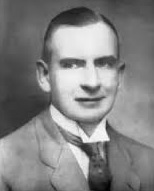
Sir Osborne Smith was the only Reserve Bank of India governor who never attended college. After attending Sydney Grammar School, Smith joined the Bank of New South Wales and, thereafter, the Commonwealth Bank of Australia. The latter posted him to London, paving the way for his later positions at the Imperial Bank of India as Managing Governor and Governor Reserve Bank of India. Please see my upcoming longer post on Osborne Smith.
Chandavarkar on Smith
Anand Chandavarkar, one of the finest officers who worked at the Bank before moving to the IMF, wrote at length on the Bank’s first Governor (EPW, 2000). According to Chandavarkar, “Smith’s education and career conformed closely to that of a typical conventional Anglo-Saxon commercial banker – the grammar school boy who joins as an apprentice with a commercial bank and rises to managerial positions after sufficient experience.” He chided SLN Simha, the author of the first volume of RBI’s official history, for giving short shrift to the Smith story. Simha, abbreviated from Narasimha, gave a weak defence (EPW, 2001).
Was the omission deliberate? After all, Bakhtiar Dadabhoy wrote, quoting a former Reserve Bank official (most probably SS Tarapore), that Smith did not even have a portrait in the Board Room of the Reserve Bank of India until around the mid-1990s, by when Smith had long passed away. The work on installing a portrait was initiated only during the governorship of S. Venkitaramanan and completed during Dr C Rangarajan’s tenure. I wrote elsewhere (see here), making a case for installing a portrait of KR Puri.
Born outside India
2. Sir Osborne Smith and Sir James Taylor, the first two Governors of the Reserve Bank of India, were born outside India. Who were the other two born outside India?
Manmohan Singh was born in 1932 in Gah, West Punjab, now in Pakistan. Urjit Patel was born in Nairobi, Kenya, in 1963. Manmohan Singh migrated with his family to India in June 1947, before independence. The latter became an Indian citizen shortly before becoming the Deputy Governor of the Reserve Bank of India.
Governor of States
3. Dr C Rangarajan wrote in his memoir, Forks in the Road, released recently, that he was only the second Governor of the Reserve Bank of India to become the Governor of an Indian State, the state of Andhra Pradesh. Who was the first, and of which state?
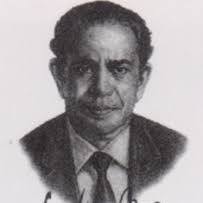
LK Jha was Governor of Jammu and Kashmir from 1973 to 1981, spanning the pre-Emergency to the post-Janata period.
I hope to review Dr Rangarajan’s book soon.
Group of Thirty
4. When Dr Raghuram Rajan became a member of the Group of Thirty, the global think tank, he was only the second Governor of the Reserve Bank of India to do so. Who was the first?
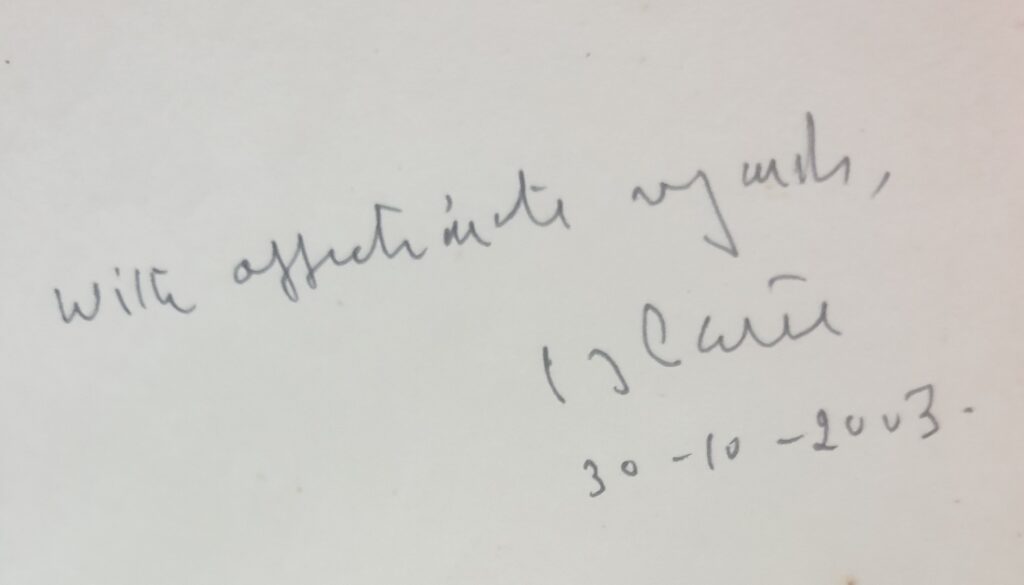
Dr IG Patel. I wrote earlier about losing my personal copy of Dr Patel’s autobiography to a ‘borrower’, a personal hurt for a long time. I managed to get a substitute. Also purchased online was Dr Patel’s book on education, and surprise of surprises, it came with an autograph by Dr Patel himself!
According to Prof Alaknanda Patel, such a warm inscription would have been made only to a very close person. That person, whoever it was, might have moved on, and the family would have disposed of it in the used books market. Only for it to land in my hands! I consider it a blessing, though two decades removed. Prof Alaknanda Patel agrees.
By the way, a long pending work has been to transcribe, edit and publish in this blog a 12-hour-long interview with Prof Patel covering her life from Dhaka to Vadodara across continents and covering economics, music, social life, and all that. This got unduly delayed due to some personal health and other issues, including moving houses. I will start working on this soon. I am committing this here so that it becomes binding on me.
LK Jha
5. LK Jha, the civil servant and former Governor, was a member of which Commission, better known after the person who chaired it, which looked into North-South issues?
The Brandt Commission, known after Willy Brandt, former Chancellor of Germany, 1969-74, started on the initiative of Robert McNamara, then World Bank President. The other members of the Commission included Edward Heath and Olof Palme, former Prime Ministers of the UK and Sweden.
Padma awardees
6. Who was the first Governor of the Reserve Bank of India to receive one of the three Padma awards, the highest national honours after the Bharat Ratna?
HVR Iengar received the Padma Vibhushan in 1962, his last year as Governor Reserve Bank of India. One would have thought CD Deshmukh or Benegal Rama Rau. Both were not considered earlier, probably because they were knighted before Independence. But, CD Deshmukh, who led an active life in different fields, received the Padma Vibhushan later in 1975 along with his then-wife, Durgabai. Rama Rau, on the other hand, after his resignation as Governor Reserve Bank of India, practically disappeared from public life.
One bank
7. The autobiography of one Governor and a biography of another discuss this bank. A third Governor makes a passing reference without naming the bank or discussing the issue in detail. The official history of the Reserve Bank of India skipped the episode. So did the then Finance Minister in his memoirs. Which bank are we discussing here? Who were the Finance Minister and the Governors? What was the issue? What was the global fallout for banking supervision from the case?
The bank is Bank of Credit and Commerce International, founded in 1972 by a Pakistani national, Agha Hasan Abedi, who was incidentally born in Lucknow, India, and started his career in Mumbai with Habib Bank when it was still based in that city before partition.
The Governor whose autobiography discusses the bank in some detail was I.G. Patel. He resisted government pressures to issue a branch licence to the bank.
Strictly Personal
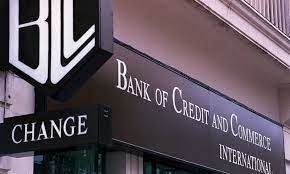
Dr Manmohan Singh’s biography by Daman Singh, Strictly Personal: Manmohan and Gursharan, discusses the bank at some length. Daman Singh mentions, quoting her father, that the Bank came under severe pressure from the government to issue a licence. When the Cabinet decided to divest the bank of its foreign bank licensing powers, Manmohan Singh sent his resignation to the Finance Minister and the Prime Minister. In the biography, based on interviews with Manmohan Singh, Daman Singh asked him about his short tenure. The conversation goes thus:
‘Your tenure in the Reserve Bank turned out to be rather brief—’
‘Two and a half years.’
‘Wouldn’t you have liked to stay on?’
I am fishing and this makes him laugh.
‘Well, I would have liked to, but when you are told to leave—’
I guess you leave.
Manmohan Singh says, “Ultimately, they dropped the idea.” Rereading Daman Singh, I was left with more questions than answers. The fact is that the idea was not dropped. When BCCI was liquidated in 1991, the Mumbai branch was taken over by the State Bank of India and made into a subsidiary. The Mumbai depositors suffered no loss as the assets were sufficient to cover deposits and other liabilities (based on a conversation with Late Vimala Visvanathan, former Executive Director).
Who did it?
The narrative in Daman Singh suggests that the bank was not issued a licence during Manmohan Singh’s tenure. If that were true, when was the licence issued? Was it during the tenure of RN Malhotra? Or was it during the brief tenure of Amitabh Ghosh, who held office for just 20 days? Amitabh Ghosh incidentally became the Deputy Governor just one week after Pranab Mukherjee took over as the Finance Minister. It doesn’t help that the official history of the Bank does not elaborate but mentions that the licence was issued in 1983 (RBI History, Vol 4A, p. 241). Pranab Mukherjee, the Finance Minister, also remained silent in his multiple-volume memoir.
Dr C Rangarajan makes a passing reference in his memoirs without naming the bank (Forks in the Road: My Days at the RBI and Beyond). Writing of Manmohan Singh, Rangarajan wrote: “He also took a firm position on RBI’s powers on issuing licenses for foreign banks to operate in India.” Rangarajan added that “But he left after two years and three months to become deputy chairman of the Planning Commission.”
Basel Committee
The Basel Committee on Banking Supervision, recognising the importance of cross-border banking supervision, took forward its early work on coordination among home and host supervisors, laid down in what was known as the Basel Concordat. In 1992, it announced minimum standards for supervising international banking groups and their cross-border banking establishments. This would be further strengthened after 1995 when the 238-year-old Barings collapsed.
Bank for Crooks and Criminals International
Towards the end of its sordid history, BCCI earned the epithet Bank for Crooks and Criminals International. Tariq Ali, the brilliant biographer of The Nehrus and Gandhis: An Indian Dynasty, wrote a screenplay on the bank and expanded the acronym to Bank of Crooks and Cheats Inc. I planned a detailed post in 2021 to mark three decades of the bank’s liquidation. But, like many other plans, it remains on the cards and will hopefully come out soon.
Central Board
8. Which director served the longest on the Central Board of the Reserve Bank of India? He is probably better remembered today for his/his family’s contributions to which entirely different fields and why?
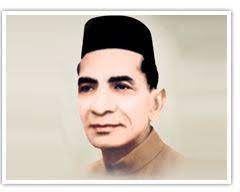
Lala Shri Ram served on the central board of the Reserve Bank of India for 26 years, from the Bank’s inception in 1935 to 1961. Along with Sir Purshottamdas Thakurdas, Lala Shri Ram, also Sir Shri Ram, came onto the Board as a government nominee when the Central Board of the Bank was first constituted. As per the legal provision, now repealed, these nominees were replaced over three years by those elected from the Local Boards of the Bank. Shri Ram was elected from the Northern Area, representing private shareholder interests there.
Apart from various companies in the DCM Shriram group, Shri Ram is also remembered for the Shri Ram College of Commerce and Lady Shri Ram College in New Delhi. The Shankarlal Music Festival, named after Sir Shankarlal, Shri Ram’s brother, is organised annually by the Shriram Bharatiya Kala Kendra.
Governance
It may not have been unusual for a director to hold such a long tenure. The anomaly was not just in the length of tenure but also in the number of directorships. I recall reading somewhere that Sir Purshottamdas Thakurdas, along with his brother (actually cousin, Sir Vaikunth Mehta), were at one time directors on the boards of more than 50 per cent of companies listed on the Bombay Stock Exchange.
But, what was unusual was that their position on the Central Board continued long after nationalisation in 1949. Did it have to do with their support for CD Deshmukh for the post of Governor in 1943? Deshmukh, as we know, was Finance Minister since nationalisation from 1950 to 1956. But, this theory is not borne out by the fact that Sir PT’s son-in-law, RG Saraiya (my distant guru of sorts in banking), and Shri Ram’s sons, Bharat Ram and Charat Ram, were on the Local/Central Boards of the Reserve Bank of India until the early 1980s. Charat Ram was a member of the Northern Area Local Board during most of the 60s and Bharat Ram was Chairman of same Local Board and Member of the Central Board during the 70s till 1982. But that is a story for another day, especially a post on RG Saraiya.
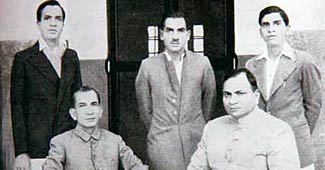
Standing (l to r): Charat Ram, Murli Dhar and Bharat Ram
A record for keeps
Considering the present norms, it is unlikely that Shri Ram’s record would ever be broken in India. There are instances in the UK of those on the Court of the Bank of England for over five decades. By the way, a recent biography of Lala Shri Ram by Sonu Bhasin does not mention her subject’s record as the longest-serving director of the Reserve Bank of India. (Sony Bhasin, Entrepreneurs Who Built India – Lal Shriram: The Man Who Saw Tomorrow, HarperCollins India, 2023).
In the Reserve Bank’s official history, there are only two contributions or references relating to Shri Ram, one for his support to Deshmukh’s candidature as Governor in 1943, when the Bank was still private, and the second for his opposition to the nationalisation of the Imperial Bank of India.
Personal note
On a personal note, my first experience of listening to overnight Hindustani music concerts more than four decades back was at the Shankarlal Music Festival. It was attended by almost all stalwarts of the day. Among the musicians then, the only one who is still continuing at current editions of the festival is Ustad Amjad Ali Khan. Among the vocalists who performed that year was the LSE-educated Vinay Bharat Ram, grandson of Lala Shri Ram.
One bungalow
9. The costliest real estate transaction in India, involving a bungalow, was the sale of Madhu Kunj, on Narayan Dabholkar Road in Malabar Hill, Mumbai, in April 2021 for Rs 1001 crore. So, what was the distant connection between the building and Indian banking and financial history?
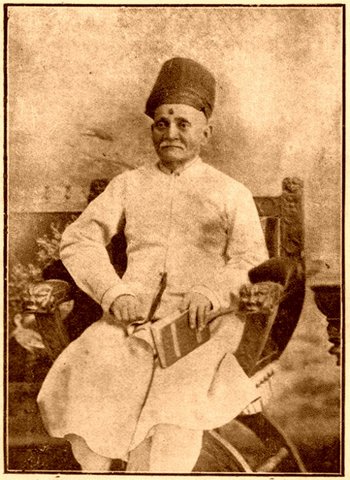
The Premchand Roychand Trust partly owned the bungalow. Premchand Roychand was the original Harshad Mehta, whose share market dealings in the 1860s brought down the first Bank of Bombay. He was dictating the investment operations of the bank just as Harshad Mehta controlled the government securities transactions at the State Bank of India about 12 decades later. Much later, Roychand would become better known as a philanthropist. The scholarships in his name at Calcutta University benefited many students who would become famous. To name a few, this included Sir Asutosh Mukherjee, Sir Jadunath Sarkar, RC Mazumdar, DN Mazumdar, Meghnad Saha and PC Mahalanobis.
After the bank was liquidated, another Bank of Bombay had to be established later, which merged with the other two Presidency Banks to become the Imperial Bank of India in 1921. There are two riveting chapters on this sordid episode in Amiya Kumar Bagchi’s History of the State Bank of India, Volume 1. For those who have no patience to go through it, I hope to write a blog post in the near future.
Another bank
10. In 1921, the three Presidency Banks of Bengal, Bombay, and Madras merged to become the Imperial Bank of India. Its jurisdiction on the western side bordered present-day Afghanistan. On the east, it included Burma or present-day Myanmar. In other words, up to the border of Siam (believed to be derived from the Sanskrit word Shyam), now known as Thailand. The new bank was given a stiff target for its total number of branches. This was to be achieved within five years. What was the target? Did the bank achieve it?
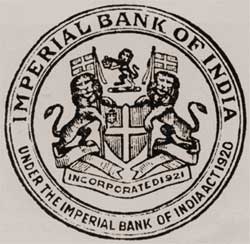
The target was 100 branches. Today, the State Bank of India, the new avatar and afterbear after nationalisation, and thanks to a series of mergers over the years, is a Fortune 500 company with over 22,000 branches apart from a lakh and a half ATMs and banking correspondents. The low target of 100 branches achievable over five years by the biggest bank in the region is now ridiculously low. But, it indicates the low penetration of modern and organised commercial banking during the period.
The bank achieved the target ahead of time.
Note: The post was updated on 4 June 2023.
© G Sreekumar
![]()